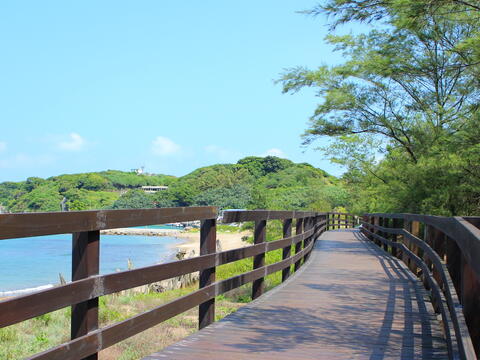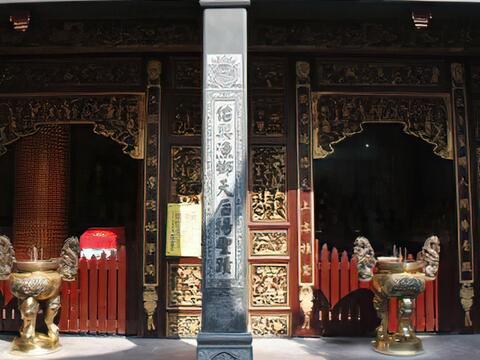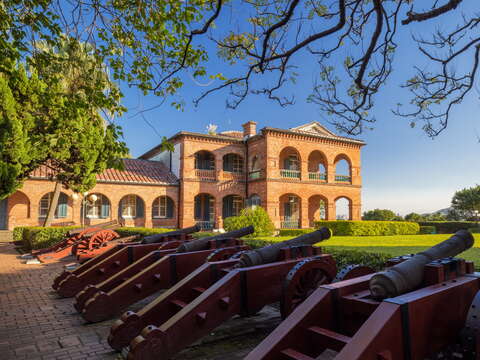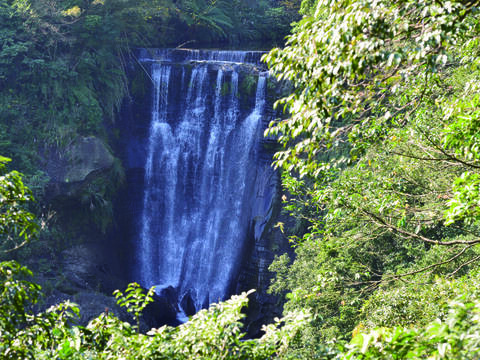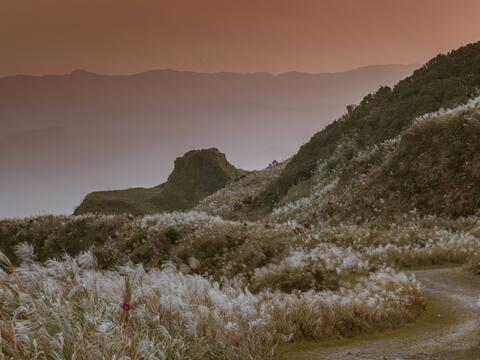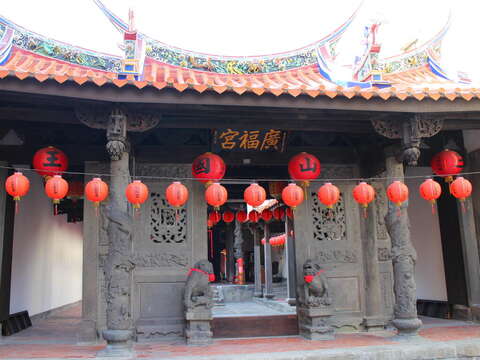Pilgrimage to Northern Coast cinematic scenes, experiencing nature and cultural heritage.
Popularity 2215
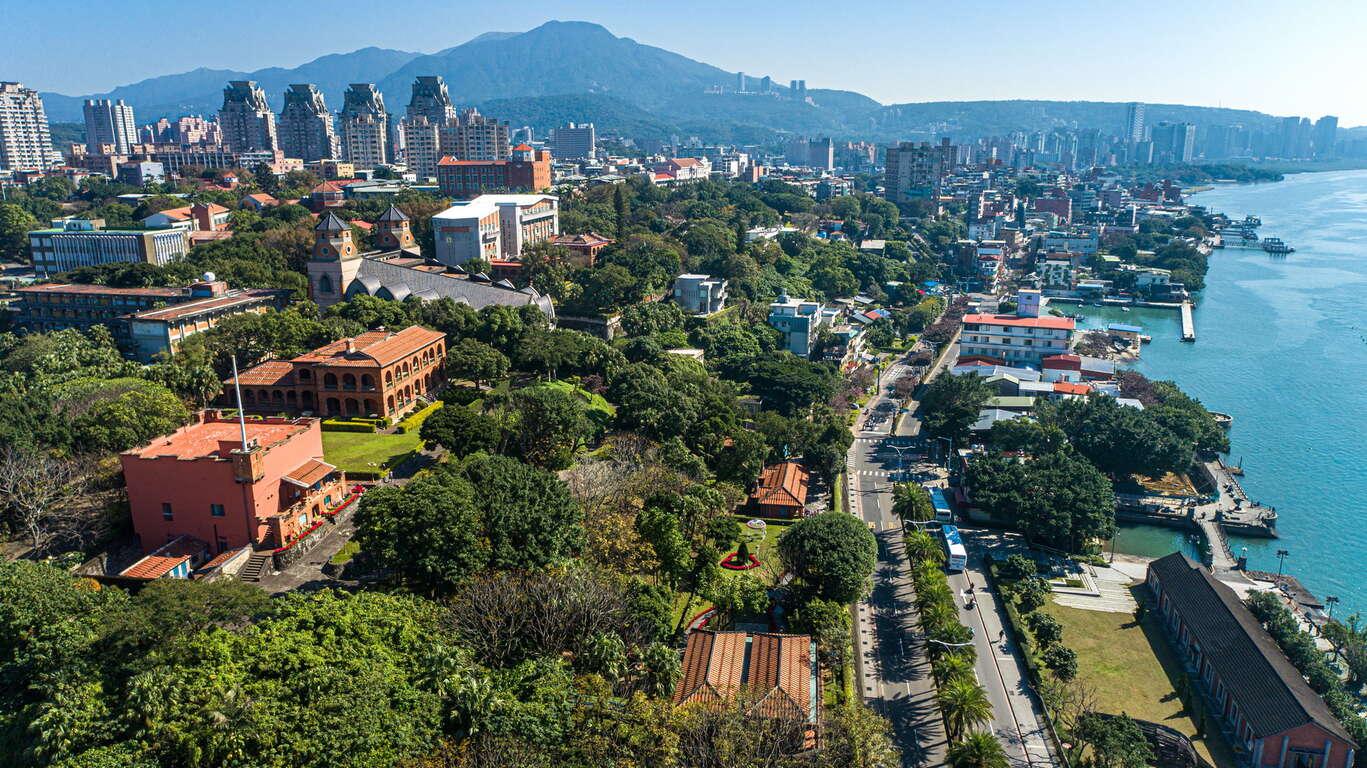
Category :
MRT Travel & Cycling Trip & Adore a star & Senior citizen & Family tour & Nostalgic tour of the old street & Secret attractions & Route 2 Taiwan-Seaside walk
Travel days :
1 day
適合對象 :
Public & Family & Cyclists & Couples & The aged
推薦路線
Day
第一天
Introduction
Anchor pointThe whirlwind caused by classic Taiwanese dramas often brings about pilgrimages. Sometimes, through the perspective of film and television works, familiar attractions will give us a new layer of emotion, while unfamiliar attractions will be a layer of mysterious colors. The Northern Coast has a rich ecology and charming sea views along the coast and is a favorite location for many film and television works.
Arrive at Linshan Cape Wooden Plank in the morning for a bicycle tour, just like passing by the bicycles shared by Xiang Lun Ye and Xiao Yu Lu in the movie "Secret." Go to Tamsui Old Street for food at noon, and visit Fu-Yo Temple on Zhongzheng Road, which seems to be able to see the lively scene of the temple performance in "David Loman 2." Join a special guided tour of Fort San Domingo. The vermilion exterior walls are full of exotic styles in the afternoon. In recent years, many popular TV series such as "Seqalu: Formosa 1867" and "Gold Leaf" were filmed in the former Qing Dynasty British Consul's residence on the east side. At dusk, come to the nearby Customs Wharf to greet the sunset. Here is also the location where the music movie "52Hz, I Love You" creates a European-style flower market.
 ▲ The Linshan Cape Wooden Plank is only 600 meters long and is suitable for walking, cycling, and enjoying the seaside scenery.
▲ The Linshan Cape Wooden Plank is only 600 meters long and is suitable for walking, cycling, and enjoying the seaside scenery.
Take a bicycle tour on the wooden plank to appreciate the natural terrain.
In 2007, Jay Chou directed and starred in the musical fantasy romance film "Secret" which swept Taiwan. The romantic scene in the movie, in which Xiang Lun Ye rides a bicycle to take Xiao Yu Lu home and the two chat about everything under the sun, is filmed at the Linshan Cape Wooden Plank.
The 600-meter-long Linshan Cape Wooden Plank Road is part of the "Linshan Cape Recreation Area" and is at the junction of Sanzhi District and Shimen District. Besides the coastal scenery, remember to look at the wind-faceted stone landform and the rich intertidal ecology. The andesite of Linshan Cape has gradually formed multi-faceted edges eroded by the northeast monsoon with fine sand for many years, so it is called "wind-faceted stone." The widespread andesite is also an excellent location for algae to attach. The replacement of the old and the new left the rock's surface with lime due to algae calcification, which accumulates layer by layer to form an algae reef. When riding a bicycle on the Linshan Cape Wooden Plank to the filming location, enjoy the sea breeze and get close to these rare natural geological landscapes.
 ▲ At the entrance of Tamsui Old Street, the fragrance of delicious food fills the air, and crowds surge along the way.
▲ At the entrance of Tamsui Old Street, the fragrance of delicious food fills the air, and crowds surge along the way.
Tasty delicacies only cost coins, and visit the ancient temple, Fu-Yo Temple.
After the exercise, fill the hunger with food from Tamsui Old Street. Regarding the must-eats in Tamsui, we must mention the three food treasures: "fish balls, a-gei, and iron eggs." A bowl of steaming fish ball soup is full of the simple taste of the fishing village, paired with a-gei topped with sweet and spicy sauce. When taking a bite, it is full of green bean noodles soaked in a salty and fragrant sauce. Finally, buy a pack of iron eggs as a snack to replenish the journey.
Pass by the "Fu-Yo Temple" on Zhongzheng Road Old Street when searching for delicious food. Temples and businesses are adjacent to the busy streets, a unique street scene in Taiwan. It even found the integration of religion and life into the daily lives of ordinary people. On the day when "David Loman 2." was filmed at Fu-Yo Temple, it presented clips of Nana and Xiaola sisters learning religious rituals, such as carrying a sedan chair, which attracted many viewers.
 ▲Fu-Yo Temple is the earliest temple built on Tamsui Old Street and has more than 200 years of history.
▲Fu-Yo Temple is the earliest temple built on Tamsui Old Street and has more than 200 years of history.
Built with the mountain behind and the river in front, the Fu-Yo Temple is the earliest in Tamsui. Its construction history dates back to the Qianlong period of the Qing Dynasty when it was a Class III historic site. It is mainly dedicated to Mazu, who protects the place and ensures safe navigation. Therefore, it is also called Mazu Temple and carries many folk legends.
According to legend, during the Sino-French War, when French warships bombarded Huwei (today's Tamsui), they saw a spirit guarding the Fu-Yo Temple, and the nearby houses were unaffected. After the war, Ming Chuan Liu petitioned Emperor Guangxu to grant a plaque because Mazu had made her presence. The plaque "Yitian Zhaoyou" (Praise Mazu for her meritorious service in protecting Taiwan during the battle) is still hanging in the temple's main hall. The temple retains many original Qing Dynasty items, and the unique architectural layout and rich carving art are also worth a visit.
 ▲The building on the east side of Fort San Domingo Park was the official residence of the British Consul in the Qing Dynasty.
▲The building on the east side of Fort San Domingo Park was the official residence of the British Consul in the Qing Dynasty.
The Fort San Domingo Park is a building that witnesses the evolution of history.
It takes about 15 minutes to walk from Fu-Yo Temple to Fort San Domingo Park to see red brick buildings full of exotic styles. The TV series "Seqalu: Formosa 1867" and "Gold Leaf," which have recently caused a craze, were filmed in the former British Consul's residence on the east side of Fort San Domingo. They present the office of Xian-De Lee, the American Consul in Xiamen, and the scene of Yi-Xin Chang, the daughter of a tea merchant, negotiating the tea business, respectively.
 ▲ The elegant and solemn interior of the former British Consul's residence is perfect for shooting solemn conversation scenes.
▲ The elegant and solemn interior of the former British Consul's residence is perfect for shooting solemn conversation scenes.
The site of Fort Santo Domingo includes the main fortress, the former British consul's residence, and the south gate built during the Qing dynasty. Spanish initially built and called it "Santo Domingo City." After destroying it, the Dutch rebuilt it on the original site and named it "Fort Antonio" (Fort San Domingo). During the Qing Dynasty, the Tamsui Tongzhi (government sub-prefect) of the Taiwan Prefecture added four outer city gates. It was not until after the Sino-French War that the trade volume of Tamsui Port increased sharply, and the British decided to build the Consul's Residence next to it. The construction of Fort San Domingo came to a temporary end. This national monument has witnessed the passage of time, and over 300 years of history have been piled brick by brick.
 ▲ Presented as "vases," the corridor railings combine the beauty of Chinese ceramics with Western vase railings.
▲ Presented as "vases," the corridor railings combine the beauty of Chinese ceramics with Western vase railings.
Fort San Domingo became the British Consulate from 1867 to 1972 because of the "Fort San Domingo Perpetual Lease" signing. It was not until later that they established the former Qing British Consulate on the east side of the main castle. The two-story red brick building was designed by British architects and constructed by Chinese craftsmen. It has typical British colonial architectural features such as sloping roofs and arch-ring corridors. Its excellent construction technology and exquisite materials have great architectural art value.
★Tamsui Fort San Domingo Park Guided Tour Service: On-site registration is limited to 30 people per session.
Daily at 10:00, 11:00, 14:00, and 16:00
 ▲ You can see the Tamsui River Bayou and the Guandu Bridge from the Customs Wharf.
▲ You can see the Tamsui River Bayou and the Guandu Bridge from the Customs Wharf.
Enjoy the magical sunset moment at the wharf.
When coming to the Tamsui Riverside, remember to catch the moment when the sunset dyes the river golden. The Customs Wharf is on a platform downhill from Fort San Domingo. It is a great place to enjoy the sunset and the opening of the Taiwanese music film "52 Hz, I Love You." The flower shop's female owner carefully dragged the cart, strolling and singing in the European-style flower market.
In the Qing Dynasty, Hu Wei became a trading port due to the signing of the Treaty of Tientsin and the Convention of Peking, and the Customs Wharf instantly became one of the most essential ports in Taiwan. The 150-meter riverside trail, built with Guanyin and Qilian stone, prevents erosion by the river water and is very sturdy. People can still see the stone mooring bollards where ships moored in the past. Today, the Tamsui Customs Wharf area has Western-style buildings and a port warehouse built during the Japanese rule. There are permanent exhibitions planned in the warehouse, and special exhibitions are changed regularly.
 ▲ Let the sunset twilight draw a beautiful end to the journey.
▲ Let the sunset twilight draw a beautiful end to the journey.
The Customs Wharf connects to the bottom of Tamsui Old Street and overlooks the Tamsui River Bayou and Guandu Bridge. The view is broad, just right for the sunset twilight to draw a beautiful end to the journey.
See more New Taipei Cinematic Pilgrimage Road:Film Assist NTPC.
Arrive at Linshan Cape Wooden Plank in the morning for a bicycle tour, just like passing by the bicycles shared by Xiang Lun Ye and Xiao Yu Lu in the movie "Secret." Go to Tamsui Old Street for food at noon, and visit Fu-Yo Temple on Zhongzheng Road, which seems to be able to see the lively scene of the temple performance in "David Loman 2." Join a special guided tour of Fort San Domingo. The vermilion exterior walls are full of exotic styles in the afternoon. In recent years, many popular TV series such as "Seqalu: Formosa 1867" and "Gold Leaf" were filmed in the former Qing Dynasty British Consul's residence on the east side. At dusk, come to the nearby Customs Wharf to greet the sunset. Here is also the location where the music movie "52Hz, I Love You" creates a European-style flower market.
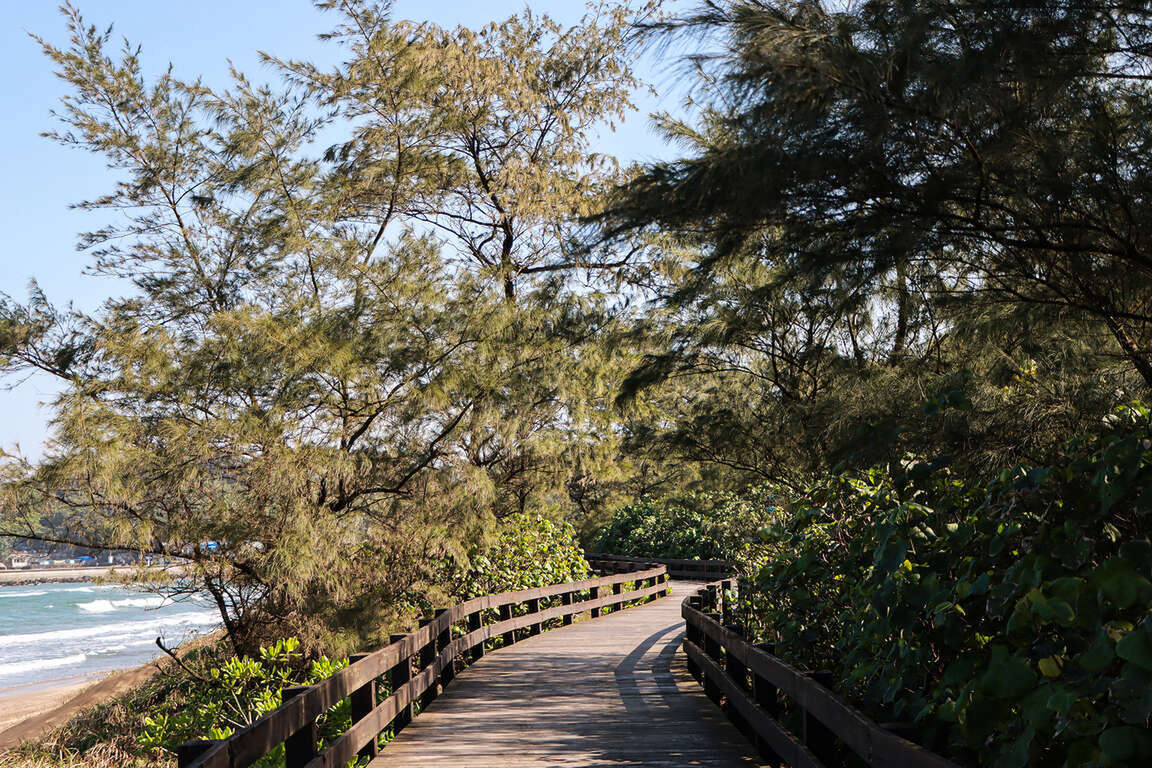
Take a bicycle tour on the wooden plank to appreciate the natural terrain.
In 2007, Jay Chou directed and starred in the musical fantasy romance film "Secret" which swept Taiwan. The romantic scene in the movie, in which Xiang Lun Ye rides a bicycle to take Xiao Yu Lu home and the two chat about everything under the sun, is filmed at the Linshan Cape Wooden Plank.
The 600-meter-long Linshan Cape Wooden Plank Road is part of the "Linshan Cape Recreation Area" and is at the junction of Sanzhi District and Shimen District. Besides the coastal scenery, remember to look at the wind-faceted stone landform and the rich intertidal ecology. The andesite of Linshan Cape has gradually formed multi-faceted edges eroded by the northeast monsoon with fine sand for many years, so it is called "wind-faceted stone." The widespread andesite is also an excellent location for algae to attach. The replacement of the old and the new left the rock's surface with lime due to algae calcification, which accumulates layer by layer to form an algae reef. When riding a bicycle on the Linshan Cape Wooden Plank to the filming location, enjoy the sea breeze and get close to these rare natural geological landscapes.
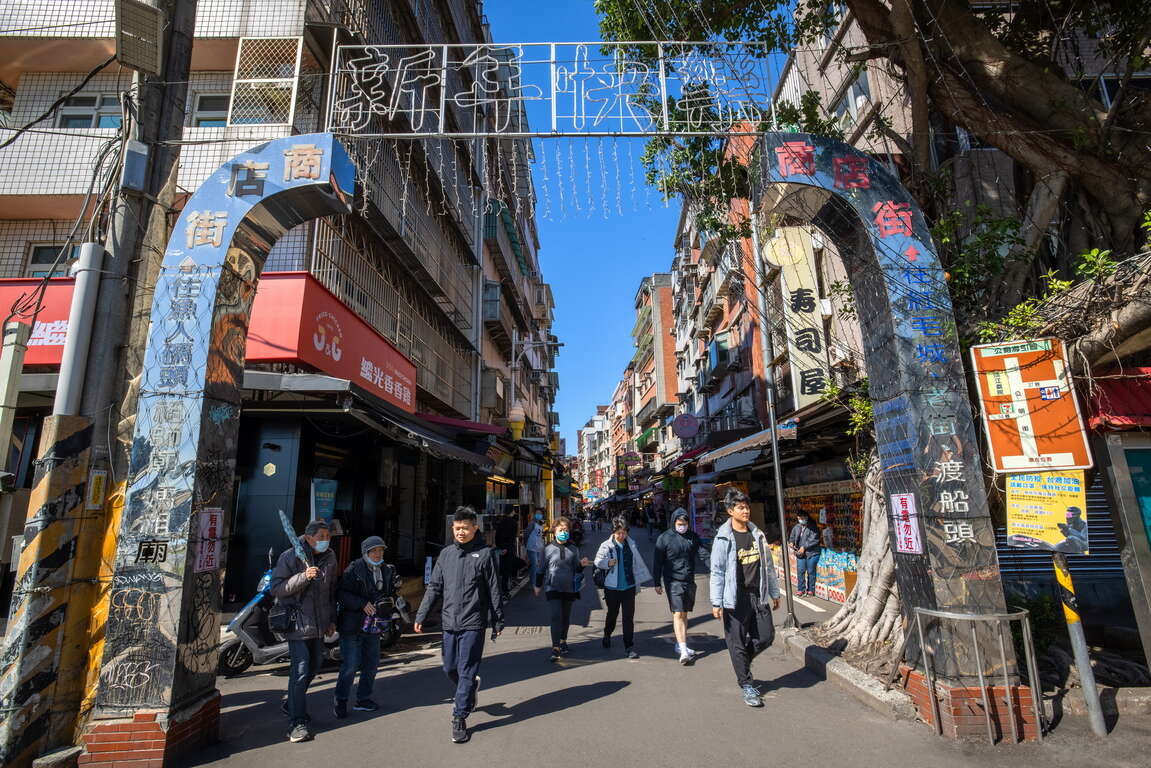
Tasty delicacies only cost coins, and visit the ancient temple, Fu-Yo Temple.
After the exercise, fill the hunger with food from Tamsui Old Street. Regarding the must-eats in Tamsui, we must mention the three food treasures: "fish balls, a-gei, and iron eggs." A bowl of steaming fish ball soup is full of the simple taste of the fishing village, paired with a-gei topped with sweet and spicy sauce. When taking a bite, it is full of green bean noodles soaked in a salty and fragrant sauce. Finally, buy a pack of iron eggs as a snack to replenish the journey.
Pass by the "Fu-Yo Temple" on Zhongzheng Road Old Street when searching for delicious food. Temples and businesses are adjacent to the busy streets, a unique street scene in Taiwan. It even found the integration of religion and life into the daily lives of ordinary people. On the day when "David Loman 2." was filmed at Fu-Yo Temple, it presented clips of Nana and Xiaola sisters learning religious rituals, such as carrying a sedan chair, which attracted many viewers.
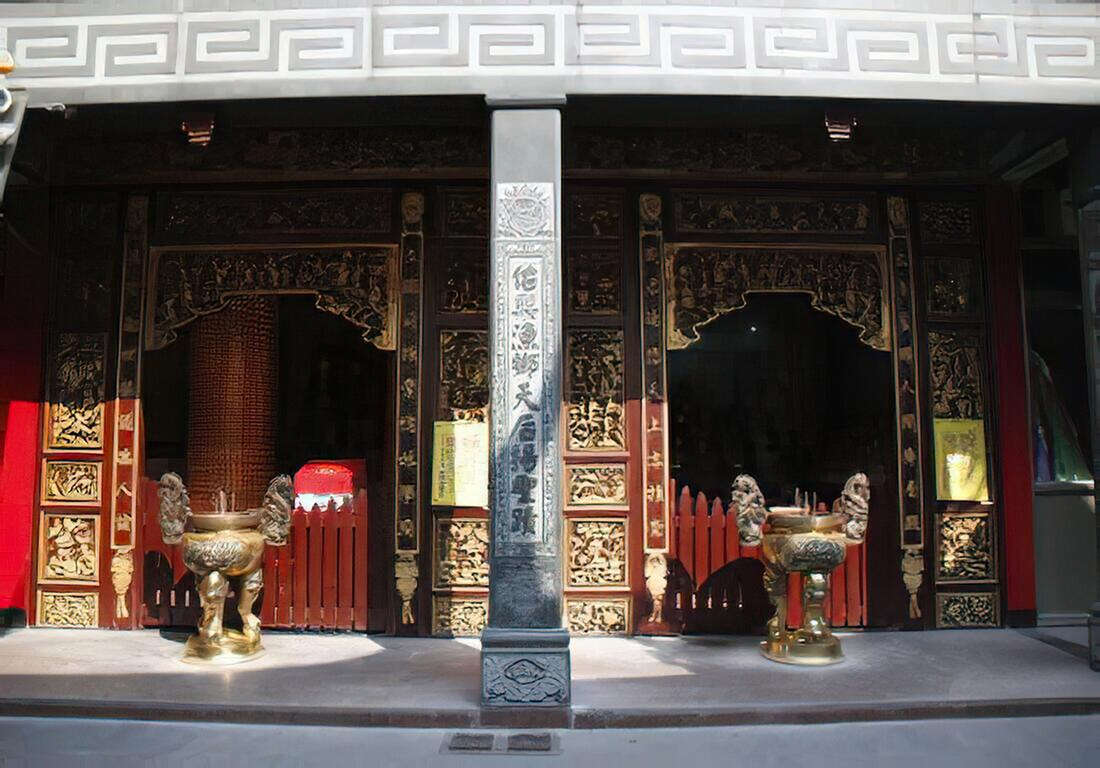
Built with the mountain behind and the river in front, the Fu-Yo Temple is the earliest in Tamsui. Its construction history dates back to the Qianlong period of the Qing Dynasty when it was a Class III historic site. It is mainly dedicated to Mazu, who protects the place and ensures safe navigation. Therefore, it is also called Mazu Temple and carries many folk legends.
According to legend, during the Sino-French War, when French warships bombarded Huwei (today's Tamsui), they saw a spirit guarding the Fu-Yo Temple, and the nearby houses were unaffected. After the war, Ming Chuan Liu petitioned Emperor Guangxu to grant a plaque because Mazu had made her presence. The plaque "Yitian Zhaoyou" (Praise Mazu for her meritorious service in protecting Taiwan during the battle) is still hanging in the temple's main hall. The temple retains many original Qing Dynasty items, and the unique architectural layout and rich carving art are also worth a visit.
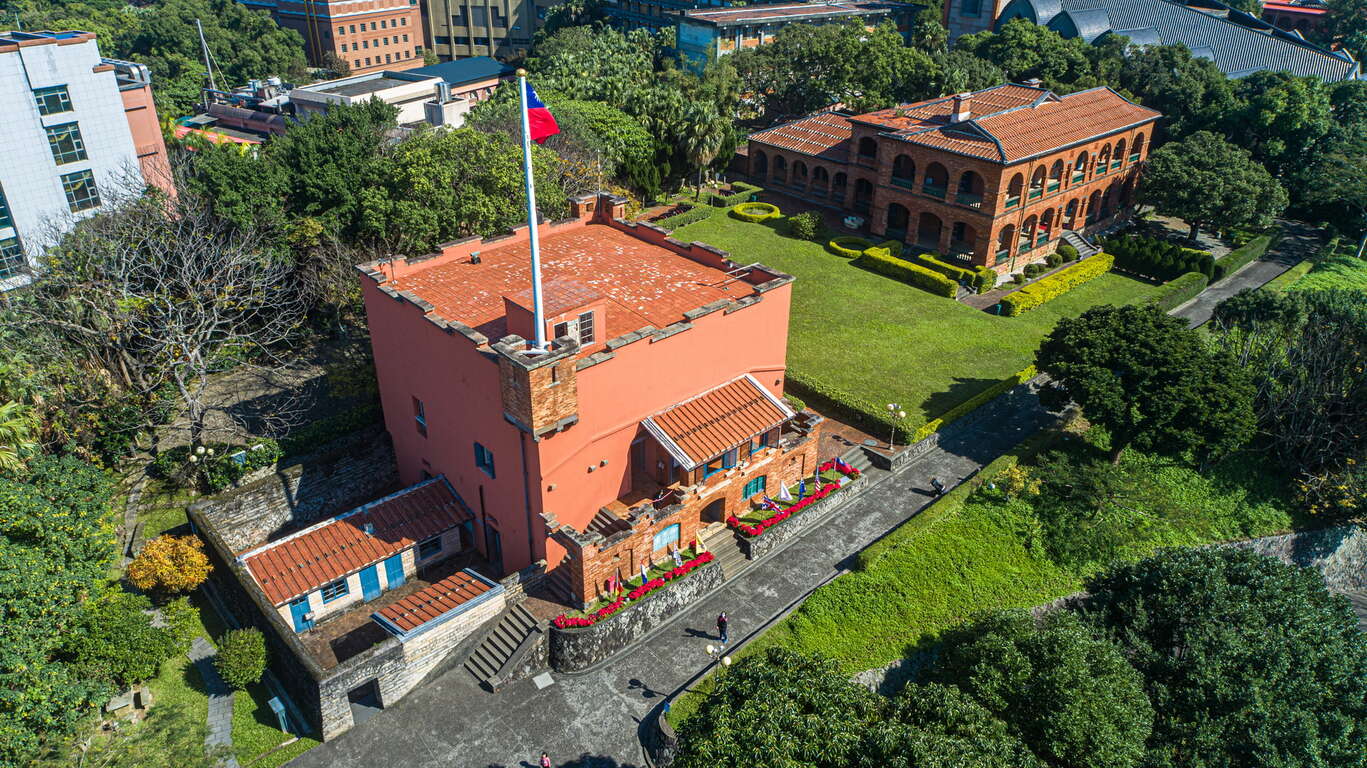
The Fort San Domingo Park is a building that witnesses the evolution of history.
It takes about 15 minutes to walk from Fu-Yo Temple to Fort San Domingo Park to see red brick buildings full of exotic styles. The TV series "Seqalu: Formosa 1867" and "Gold Leaf," which have recently caused a craze, were filmed in the former British Consul's residence on the east side of Fort San Domingo. They present the office of Xian-De Lee, the American Consul in Xiamen, and the scene of Yi-Xin Chang, the daughter of a tea merchant, negotiating the tea business, respectively.
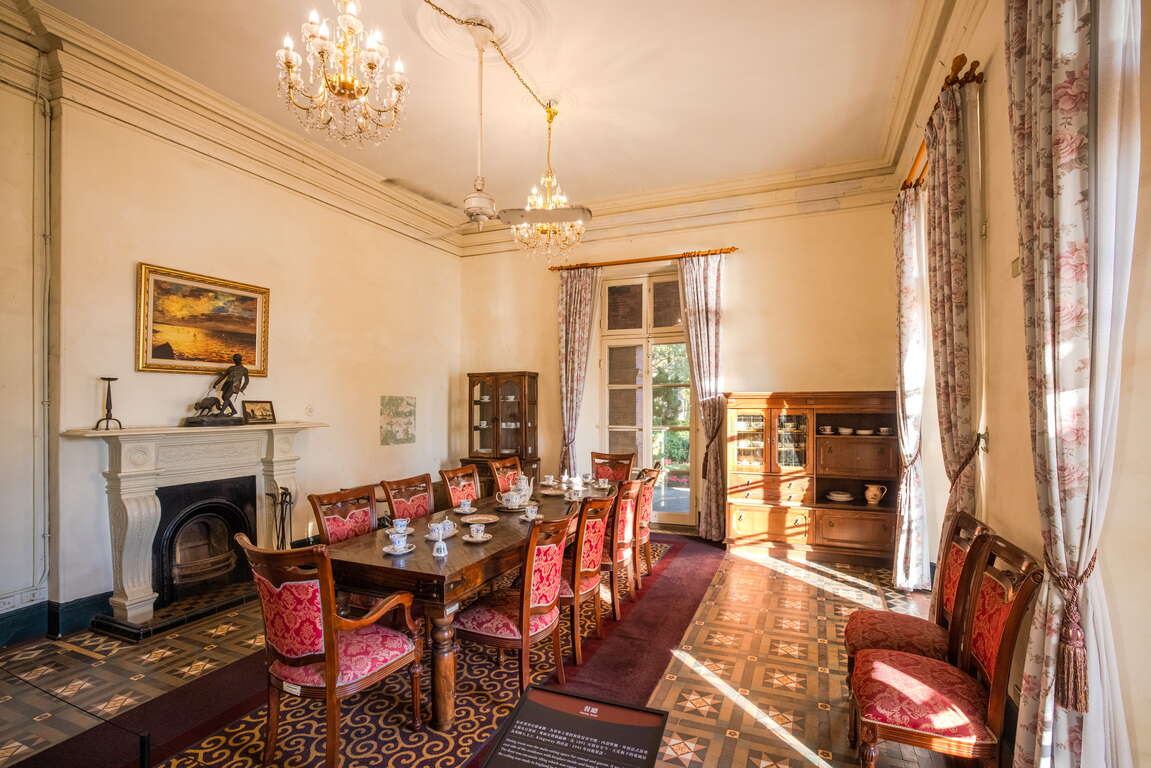
The site of Fort Santo Domingo includes the main fortress, the former British consul's residence, and the south gate built during the Qing dynasty. Spanish initially built and called it "Santo Domingo City." After destroying it, the Dutch rebuilt it on the original site and named it "Fort Antonio" (Fort San Domingo). During the Qing Dynasty, the Tamsui Tongzhi (government sub-prefect) of the Taiwan Prefecture added four outer city gates. It was not until after the Sino-French War that the trade volume of Tamsui Port increased sharply, and the British decided to build the Consul's Residence next to it. The construction of Fort San Domingo came to a temporary end. This national monument has witnessed the passage of time, and over 300 years of history have been piled brick by brick.
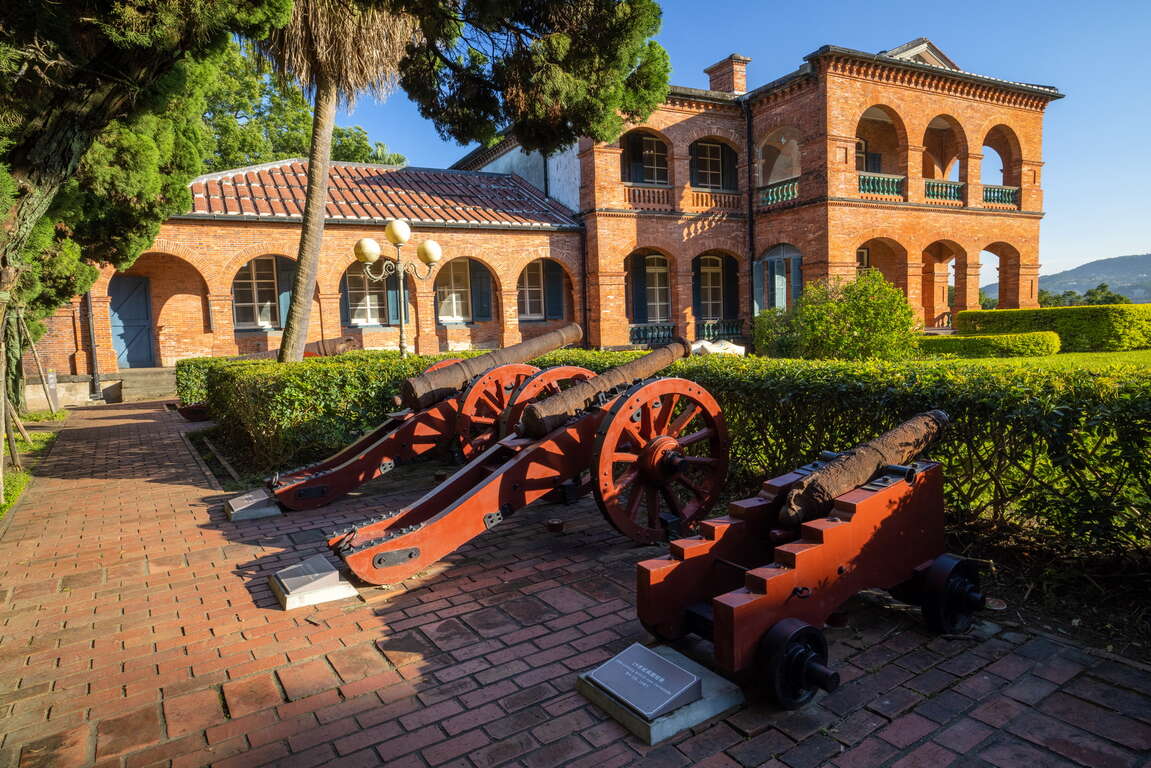
Fort San Domingo became the British Consulate from 1867 to 1972 because of the "Fort San Domingo Perpetual Lease" signing. It was not until later that they established the former Qing British Consulate on the east side of the main castle. The two-story red brick building was designed by British architects and constructed by Chinese craftsmen. It has typical British colonial architectural features such as sloping roofs and arch-ring corridors. Its excellent construction technology and exquisite materials have great architectural art value.
★Tamsui Fort San Domingo Park Guided Tour Service: On-site registration is limited to 30 people per session.
Daily at 10:00, 11:00, 14:00, and 16:00
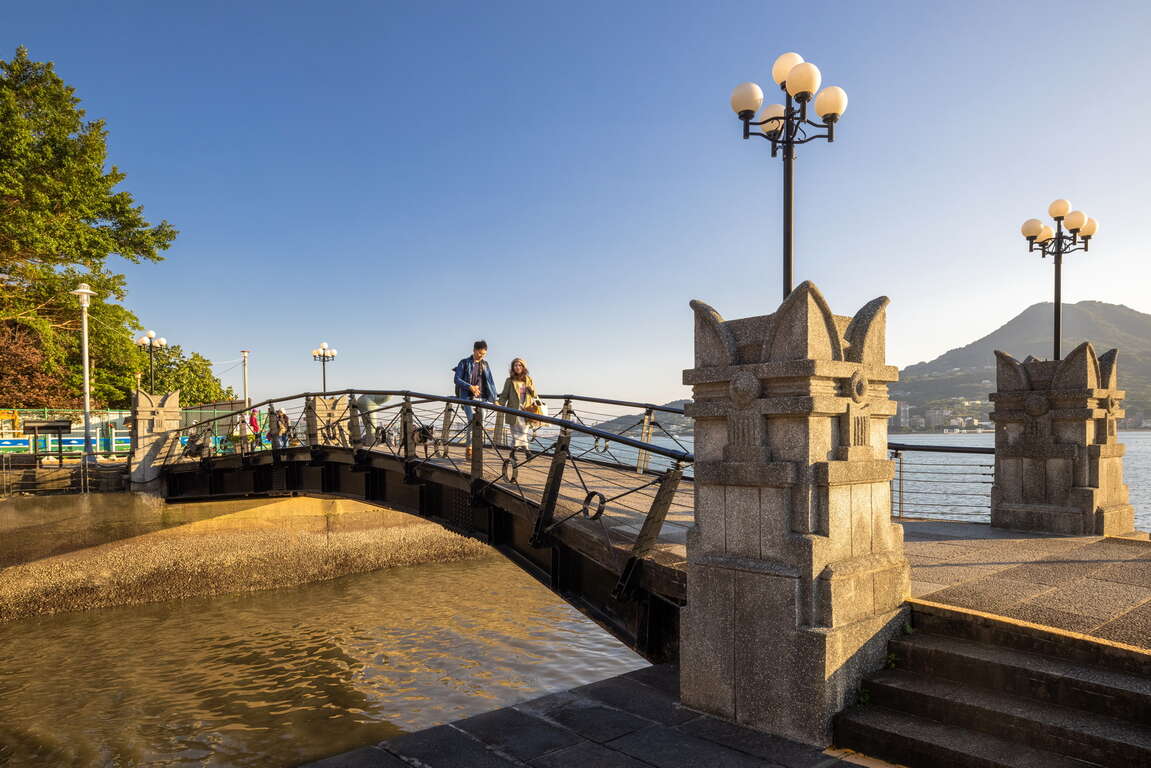
Enjoy the magical sunset moment at the wharf.
When coming to the Tamsui Riverside, remember to catch the moment when the sunset dyes the river golden. The Customs Wharf is on a platform downhill from Fort San Domingo. It is a great place to enjoy the sunset and the opening of the Taiwanese music film "52 Hz, I Love You." The flower shop's female owner carefully dragged the cart, strolling and singing in the European-style flower market.
In the Qing Dynasty, Hu Wei became a trading port due to the signing of the Treaty of Tientsin and the Convention of Peking, and the Customs Wharf instantly became one of the most essential ports in Taiwan. The 150-meter riverside trail, built with Guanyin and Qilian stone, prevents erosion by the river water and is very sturdy. People can still see the stone mooring bollards where ships moored in the past. Today, the Tamsui Customs Wharf area has Western-style buildings and a port warehouse built during the Japanese rule. There are permanent exhibitions planned in the warehouse, and special exhibitions are changed regularly.
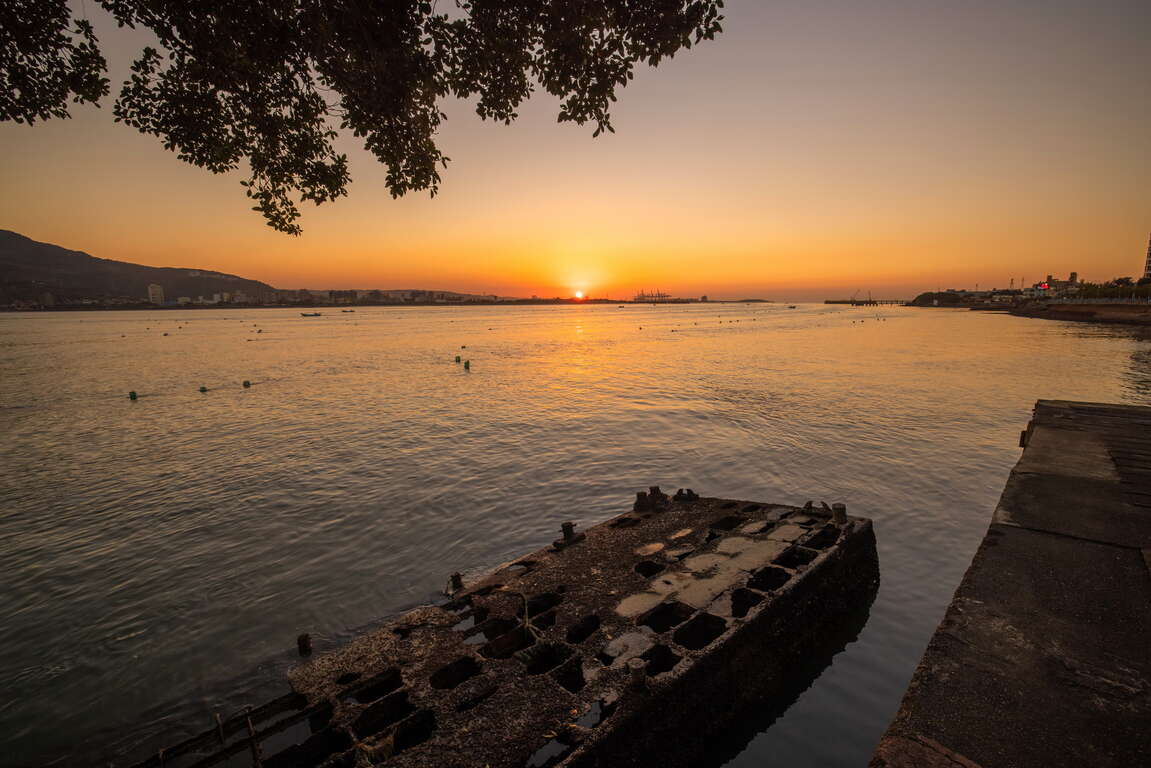
The Customs Wharf connects to the bottom of Tamsui Old Street and overlooks the Tamsui River Bayou and Guandu Bridge. The view is broad, just right for the sunset twilight to draw a beautiful end to the journey.
See more New Taipei Cinematic Pilgrimage Road:Film Assist NTPC.
Read more
What's Hot
Things to do
Plan your trip
